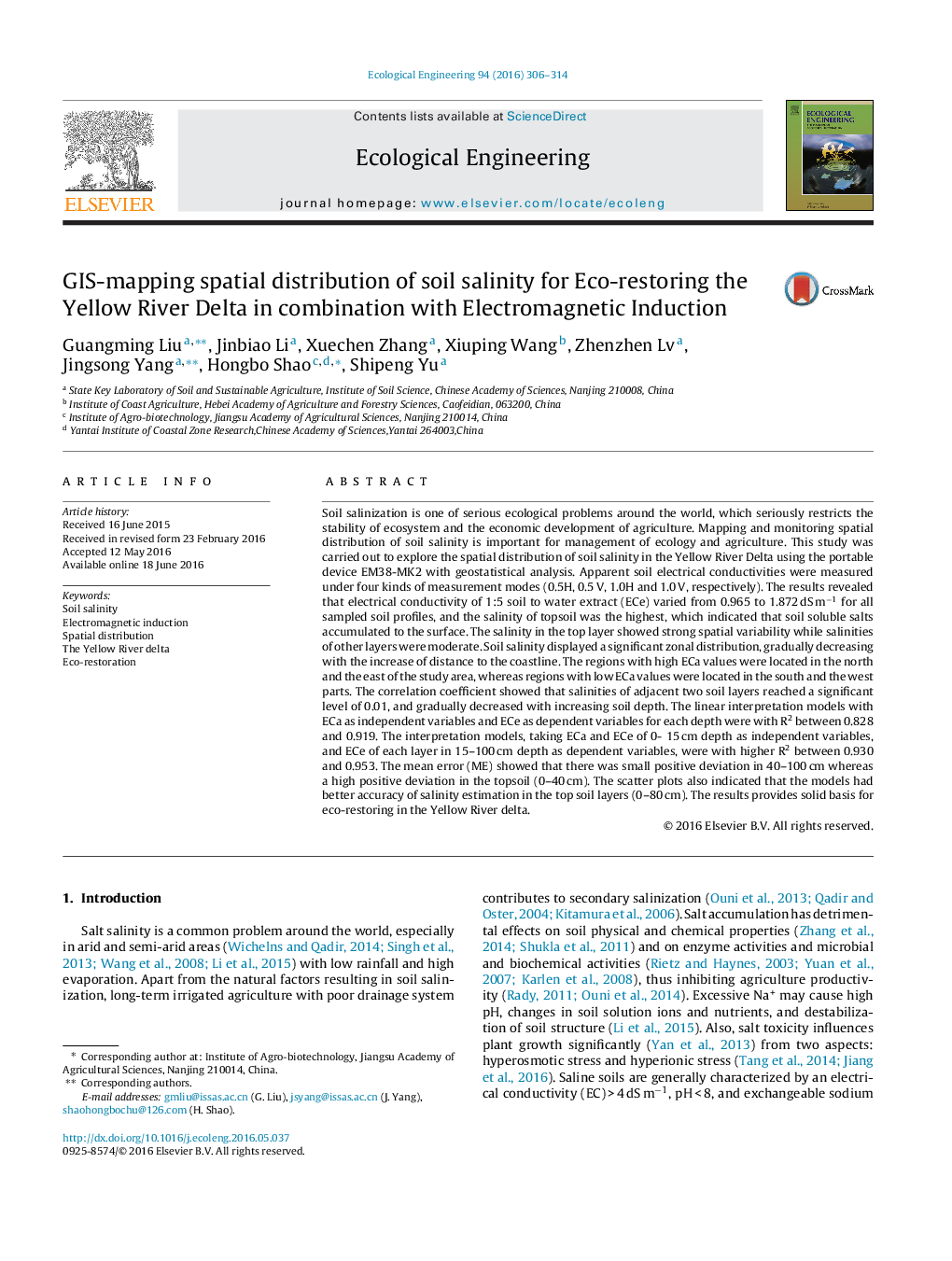| Article ID | Journal | Published Year | Pages | File Type |
|---|---|---|---|---|
| 4388557 | Ecological Engineering | 2016 | 9 Pages |
•Constructing soil salinity interpreting models based on massive field survey data collected by electromagnetic induction and soil sampling.•Mapping three dimensional distribution of soil salinity using ordinary kriging in the study area.•Bringing forward a systematic method for soil salinity distribution interpreting from data collection to mapping.•Providing solid basis of soil salinity for eco-restoring in the Yellow River Delta.
Soil salinization is one of serious ecological problems around the world, which seriously restricts the stability of ecosystem and the economic development of agriculture. Mapping and monitoring spatial distribution of soil salinity is important for management of ecology and agriculture. This study was carried out to explore the spatial distribution of soil salinity in the Yellow River Delta using the portable device EM38-MK2 with geostatistical analysis. Apparent soil electrical conductivities were measured under four kinds of measurement modes (0.5H, 0.5 V, 1.0H and 1.0 V, respectively). The results revealed that electrical conductivity of 1:5 soil to water extract (ECe) varied from 0.965 to 1.872 dS m−1 for all sampled soil profiles, and the salinity of topsoil was the highest, which indicated that soil soluble salts accumulated to the surface. The salinity in the top layer showed strong spatial variability while salinities of other layers were moderate. Soil salinity displayed a significant zonal distribution, gradually decreasing with the increase of distance to the coastline. The regions with high ECa values were located in the north and the east of the study area, whereas regions with low ECa values were located in the south and the west parts. The correlation coefficient showed that salinities of adjacent two soil layers reached a significant level of 0.01, and gradually decreased with increasing soil depth. The linear interpretation models with ECa as independent variables and ECe as dependent variables for each depth were with R2 between 0.828 and 0.919. The interpretation models, taking ECa and ECe of 0- 15 cm depth as independent variables, and ECe of each layer in 15–100 cm depth as dependent variables, were with higher R2 between 0.930 and 0.953. The mean error (ME) showed that there was small positive deviation in 40–100 cm whereas a high positive deviation in the topsoil (0–40 cm). The scatter plots also indicated that the models had better accuracy of salinity estimation in the top soil layers (0–80 cm). The results provides solid basis for eco-restoring in the Yellow River delta.
